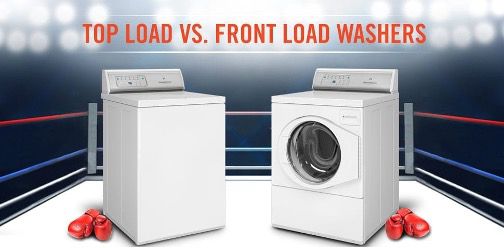
#LearnWithLee
While you may think that you have considered all the different factors when choosing your laundry appliances - brand, features, laundry room layout, size/capacity, etc. - your laundry habits and lifestyle are the main aspects that you should consider when choosing a washer. The physical appearance and design affecting the way we load and unload items into a front-load washer, versus a top-load, is not the only difference between the two. Learn with Lee as we analyze the differences between a top and front load washer, ultimately begging the question, which is better?
Differences
We know that how you manage your everyday life depends on what you value. If your time is valuable to you, a top load washer could be what you need as it tends to produce a shorter cycle time. Rather, if water usage is more valuable to you, a front-load washer may be better for you. Compare the following differences to determine which washer type is better suited for you.
Clean Type
Top Load Washer - Uses an impeller or agitator to move clothes in a wash basket; this cleaning type may cause wear and tear to your clothing items.
Front Load Washer - Uses a tumble motion to clean items; a mechanism like that of a traditional tumbling dryer. The tumble motion tends to be gentler on clothes.
Comfort & Convenience:
Top Load Washer - The bottom of the washer may be difficult to reach for those with shorter stature. Top load models tend to require less maintenance overall and faster cycle times
Front Load Washer - Can stack and save space with a dryer pair for small or vertical spaces.
Settings Location:
Top Load Washer - Includes a backguard on the top rear surface of the washer. Depending on the model, some top load washers may include a deep-water wash setting.
Front Load Washer - Providing more spin speeds and settings than a top load, the controls are usually located on the front of a front load washer.
Capacity:
Top Load Washer - Tend to have a larger capacity, as larger loads won’t put as much strain on the washer’s bearings. Some brands specialize in a larger capacity model option.
Front Load Washer - Tend to use less water and they are usually available in larger capacities. Without an agitator crowding space, a front load tends to hold more items and clothing, although too large of loads may cause wear and tear that can lead to repairs down the road.
Efficiency:
Top Load Washer - Generally faster cycle times on select models, although they typically use more water and energy with deep fill and deep-water wash setting options on most models. Note: If you are looking to save money and energy, washing your clothes with cold water can make your top load washer more efficient.
Front Load Washer - Generally more efficient using less water, models that use high-efficiency (he) detergent use lower water levels and concentrated cleaning, so you don’t have to use as much detergent.
So, which is better?
While there isn’t a proven answer for which washer type is better, after comparing the two washer types with your lifestyle values in consideration, you should have a clear idea of what will work best in your home. Some final thoughts from Lee as you make decisions toward completing your laundry room are the benefits of each washer type.
Top load washer benefits:
- Fast cycle times available
- Choice between agitator or impeller washing designs
- Deep Water Wash functionality on select models
Front load washer benefits:
- Leader in high-efficiency cleaning
- Generally uses less water
- Can result in shorter drying times
- Gentle on clothes